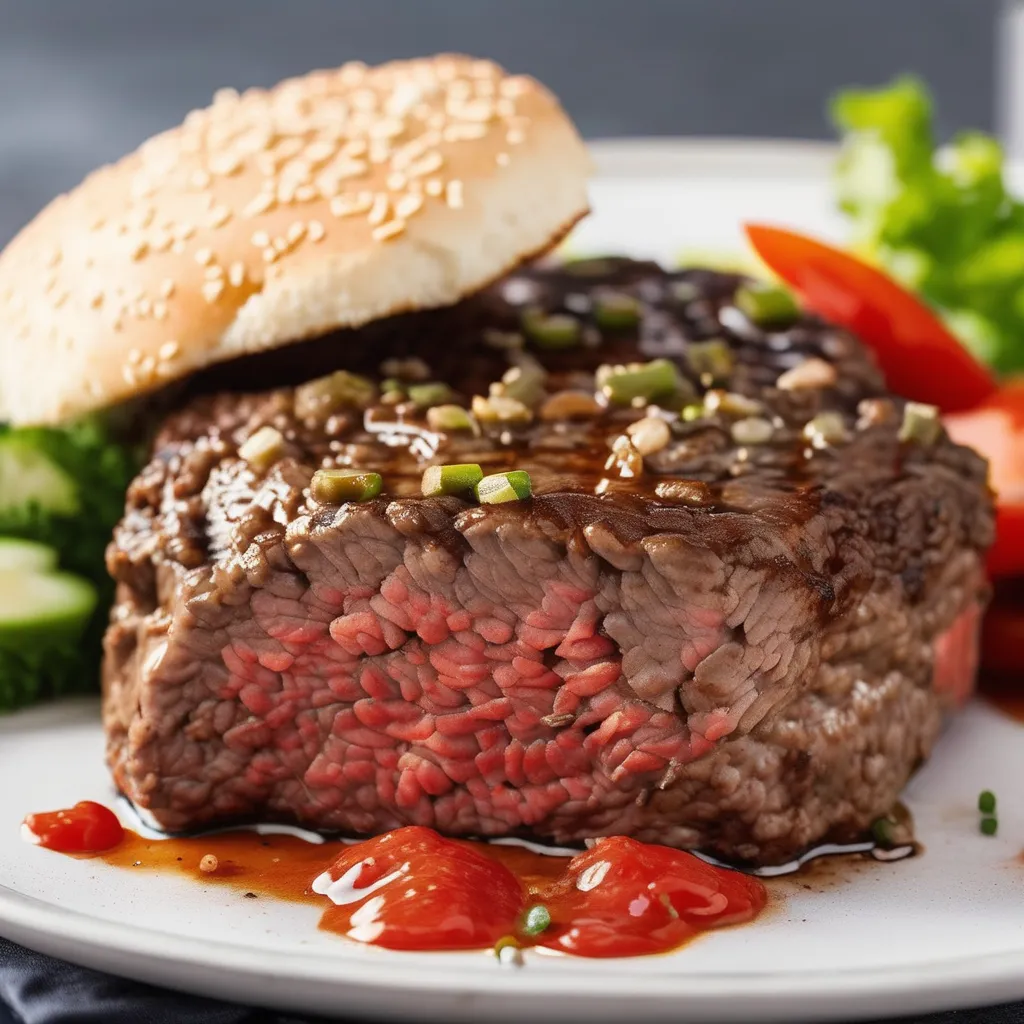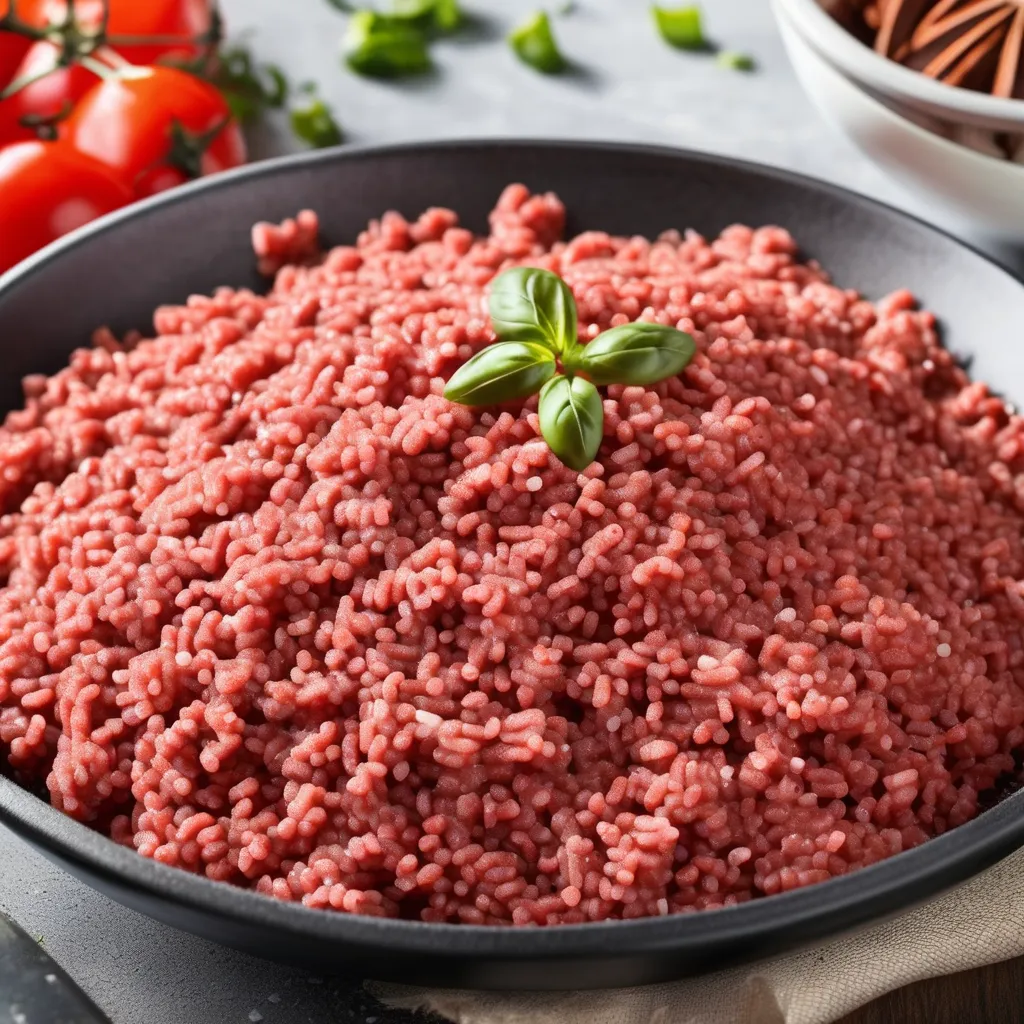Cooking ground beef is a staple in many households. However, it’s easy to make mistakes that can lead to food safety issues and compromised flavor. In this article, we’ll cover the most common mistakes when cooking ground beef and provide tips to ensure your meals are both delicious and safe.
Introduction
Ground beef is a versatile ingredient used in a myriad of dishes, from classic hamburgers to hearty meat sauces. However, improper handling and cooking can lead to foodborne illnesses and subpar results. Therefore, knowing what not to do when cooking ground beef is crucial for both health and taste.
Common Mistakes to Avoid When Cooking Ground Beef
Mistake 1: Not Thawing Ground Beef Properly
One of the most common ground beef cooking mistakes is not thawing it properly. Thawing on the countertop can lead to uneven cooking and the growth of harmful bacteria.
- Thawing Ground Beef in the Refrigerator: This is the safest method, allowing the beef to thaw evenly.
- Using the Microwave for Quick Thawing: If you’re in a hurry, this can be an acceptable method. Nevertheless, make sure to cook the beef immediately after.
For more detailed guidelines on ground beef safety, refer to the USDA Food Safety and Inspection Service.
Mistake 2: Using the Wrong Type of Pan
The type of pan you use can significantly affect the outcome of your ground beef.
- Heavy-Bottomed Pans for Even Cooking: Ensures even cooking and browning.
- Avoid Non-Stick Pans: These can prevent proper browning, which is essential for flavor.
Mistake 3: Overcrowding the Pan
Overcrowding the pan is another frequent mistake. When too much beef is in the pan, it steams rather than browns.
- Cooking Ground Beef in Batches: This ensures each piece of beef gets properly browned.
Mistake 4: Cooking at the Wrong Temperature
Temperature control is vital when cooking ground beef.
- Optimal Medium-High Heat for Browning: This is the best temperature for browning. However, be cautious not to crank up the heat too high.
- Avoiding Extreme Temperatures: Too high can burn the beef; too low can make it tough and chewy.
Common Seasoning Mistakes with Ground Beef
Mistake 5: Not Using Enough Seasoning
Seasoning is key to flavorful ground beef. Unfortunately, many people don’t use enough seasoning.
- Adequate Seasoning: Don’t be afraid to use salt, pepper, and other spices to enhance flavor.
Mistake 6: Seasoning Ground Beef Too Early
Adding salt too early can draw out moisture from the beef, making it dry.
- Seasoning During Cooking: Add salt and spices midway through the cooking process to ensure better moisture retention.
Mistake 7: Using the Wrong Spices
Some spices can overpower the flavor of ground beef. Therefore, it’s important to choose wisely.
- Recommended Spices for Ground Beef: Garlic powder, onion powder, paprika, and cumin.
- Avoid Overpowering Spices: Such as cloves and allspice, which can overshadow the natural flavor of the beef.
Handling and Safety Mistakes to Avoid
Mistake 8: Cross-Contamination Risks
Cross-contamination is a serious issue that can lead to foodborne illnesses. Therefore, it is crucial to take preventive measures.
- Separate Cutting Boards and Utensils: Use different tools for raw and cooked beef.
- Sanitizing Surfaces: Clean all surfaces that come into contact with raw beef thoroughly.
For more food safety tips, check the Mayo Clinic’s guide to food safety.
Mistake 9: Not Washing Hands Properly
Always wash your hands before and after handling raw ground beef.
- Proper Handwashing Technique: Use soap and warm water, scrubbing for at least 20 seconds.
Mistake 10: Ignoring Expiry Dates on Ground Beef
Using expired ground beef can pose serious health risks.
- Check for Freshness: Always ensure your beef is within its expiry date to avoid foodborne illnesses.
Mistake 11: Not Using a Meat Thermometer
Ensuring ground beef reaches the right internal temperature is crucial for safety.
- 160°F Internal Temperature: Use a meat thermometer to verify the beef is cooked safely.
Cooking Techniques to Avoid with Ground Beef
Mistake 12: Overcooking Ground Beef
Overcooking ground beef can make it dry and tough.
- Cook Just Until Browned: Remove from heat as soon as it reaches the right color and temperature.
Mistake 13: Stirring Ground Beef Too Much
Excessive stirring can affect the texture of the beef.
- Minimal Stirring for Better Texture: Stir only enough to break up the meat and ensure even cooking.
Storage Mistakes to Avoid
Mistake 14: Improperly Storing Raw Ground Beef
Storing raw ground beef incorrectly can lead to contamination.
- Store in the Coldest Part of the Fridge: Ideally below 40°F.
- Use Airtight Containers: To prevent contamination and drying out.
Mistake 15: Storing Cooked Ground Beef Incorrectly
Proper storage of cooked beef is equally important.
- Cool Before Refrigerating: Let it cool to room temperature before storing.
- Use Within 3-4 Days: Cooked ground beef should be eaten within this timeframe.
Health Considerations When Cooking Ground Beef
Mistake 16: Ignoring the Fat Content of Ground Beef
Different recipes may require different fat contents in ground beef. Therefore, understanding the fat content is crucial.
- Understand Fat Content: Choose ground beef with the appropriate fat percentage for your dish.
Mistake 17: Not Draining Excess Fat from Ground Beef
Draining excess fat can improve the healthiness of your dish.
- Drain Fat After Cooking: Use a colander or tilt the pan to remove excess fat.
FAQs About Ground Beef Cooking and Safety
- How long does ground beef last in the fridge? Ground beef lasts 1-2 days in the fridge when stored properly.
- Can I cook ground beef from frozen? Yes, but it’s best to thaw it first for even cooking.
- How do I know if ground beef is bad? Look for signs like a sour smell, slimy texture, and discoloration.
- What’s the best way to thaw ground beef? Thawing in the refrigerator is the safest method. However, if you’re in a hurry, you can use the microwave.
- Can you refreeze ground beef after thawing? Only if it was thawed in the refrigerator and not left out at room temperature.
Conclusion
By avoiding these common mistakes when cooking ground beef, you can ensure your dishes are both delicious and safe to eat. Furthermore, understanding the importance of proper handling, cooking, and storage will elevate your culinary skills and keep your meals free from foodborne risks. Therefore, you will be able to enjoy your meals without any worries. Happy cooking!





